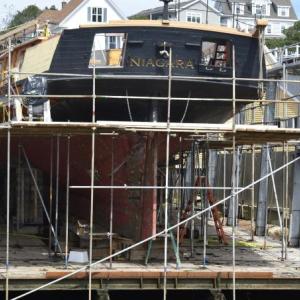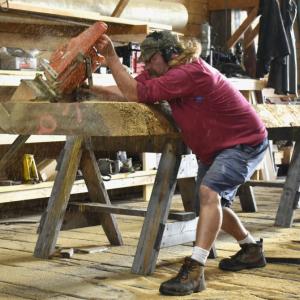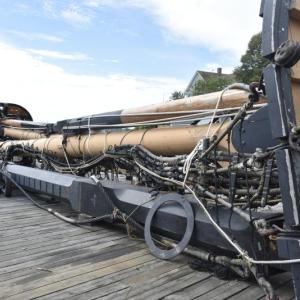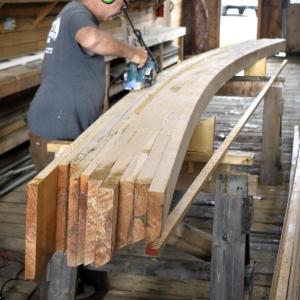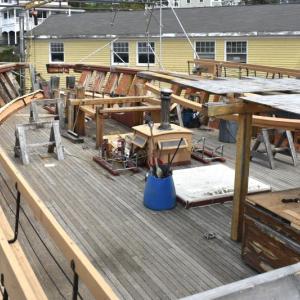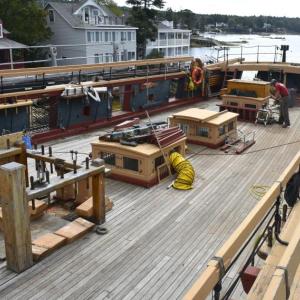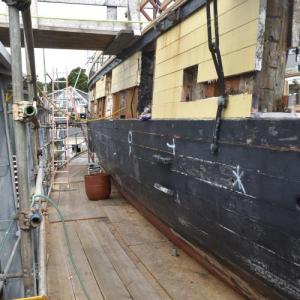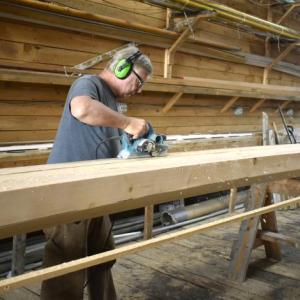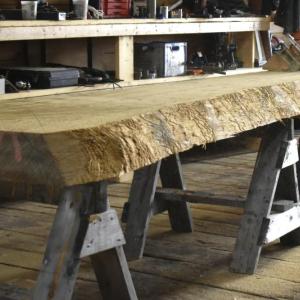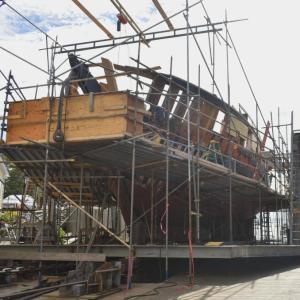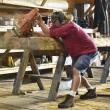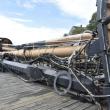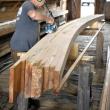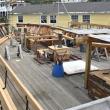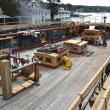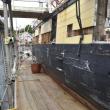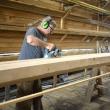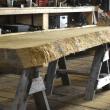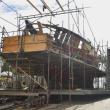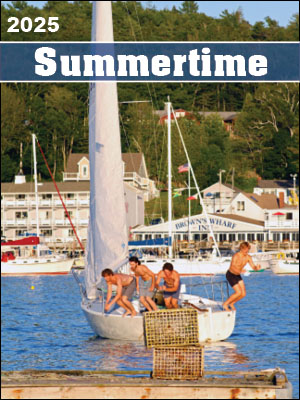Keeping history, traditions afloat with the US Brig Niagara
 US Brig Niagara, at the Bristol Marine shipyard in Boothbay Harbor. FRITZ FREUDENBERGER/Boothbay Register
US Brig Niagara, at the Bristol Marine shipyard in Boothbay Harbor. FRITZ FREUDENBERGER/Boothbay Register
 Shipwright Ross Branch cuts lumber for the Niagara's new knightheads. FRITZ FREUDENBERGER/Boothbay Register
Shipwright Ross Branch cuts lumber for the Niagara's new knightheads. FRITZ FREUDENBERGER/Boothbay Register
 The Niagara's masts were carried as cargo on its voyage to Maine. FRITZ FREUDENBERGER/Boothbay Register
The Niagara's masts were carried as cargo on its voyage to Maine. FRITZ FREUDENBERGER/Boothbay Register
 Carpenter Rick Prose at work. FRITZ FREUDENBERGER/Boothbay Register
Carpenter Rick Prose at work. FRITZ FREUDENBERGER/Boothbay Register
 FRITZ FREUDENBERGER/Boothbay Register
FRITZ FREUDENBERGER/Boothbay Register
 FRITZ FREUDENBERGER/Boothbay Register
FRITZ FREUDENBERGER/Boothbay Register
 FRITZ FREUDENBERGER/Boothbay Register
FRITZ FREUDENBERGER/Boothbay Register
 FRITZ FREUDENBERGER/Boothbay Register
FRITZ FREUDENBERGER/Boothbay Register
 FRITZ FREUDENBERGER/Boothbay Register
FRITZ FREUDENBERGER/Boothbay Register
 FRITZ FREUDENBERGER/Boothbay Register
FRITZ FREUDENBERGER/Boothbay Register
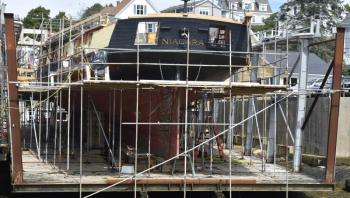 US Brig Niagara, at the Bristol Marine shipyard in Boothbay Harbor. FRITZ FREUDENBERGER/Boothbay Register
US Brig Niagara, at the Bristol Marine shipyard in Boothbay Harbor. FRITZ FREUDENBERGER/Boothbay Register
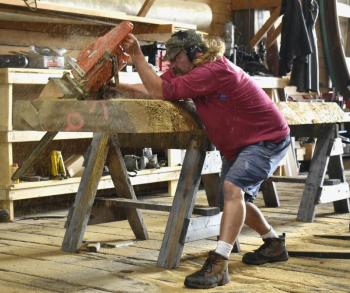 Shipwright Ross Branch cuts lumber for the Niagara's new knightheads. FRITZ FREUDENBERGER/Boothbay Register
Shipwright Ross Branch cuts lumber for the Niagara's new knightheads. FRITZ FREUDENBERGER/Boothbay Register
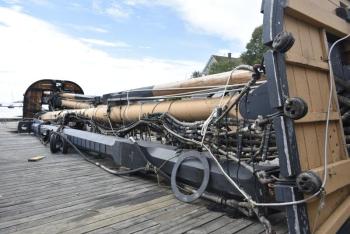 The Niagara's masts were carried as cargo on its voyage to Maine. FRITZ FREUDENBERGER/Boothbay Register
The Niagara's masts were carried as cargo on its voyage to Maine. FRITZ FREUDENBERGER/Boothbay Register
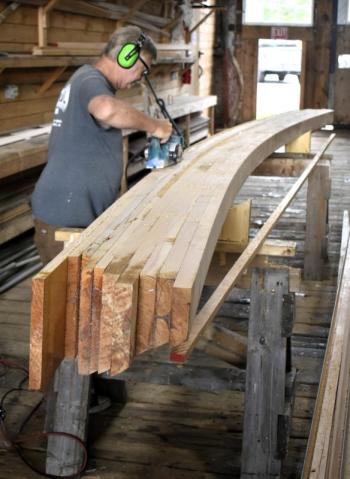 Carpenter Rick Prose at work. FRITZ FREUDENBERGER/Boothbay Register
Carpenter Rick Prose at work. FRITZ FREUDENBERGER/Boothbay Register
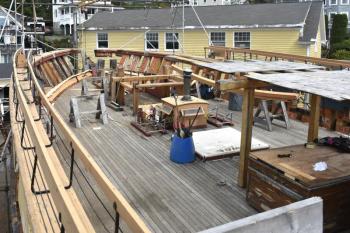 FRITZ FREUDENBERGER/Boothbay Register
FRITZ FREUDENBERGER/Boothbay Register
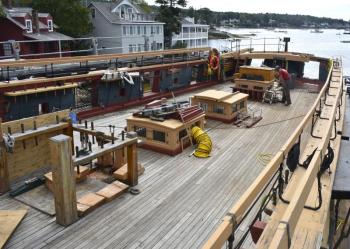 FRITZ FREUDENBERGER/Boothbay Register
FRITZ FREUDENBERGER/Boothbay Register
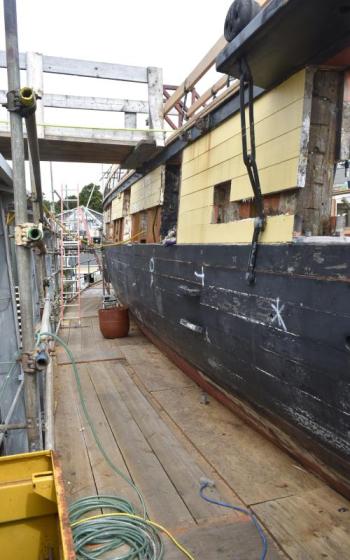 FRITZ FREUDENBERGER/Boothbay Register
FRITZ FREUDENBERGER/Boothbay Register
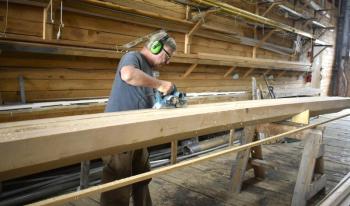 FRITZ FREUDENBERGER/Boothbay Register
FRITZ FREUDENBERGER/Boothbay Register
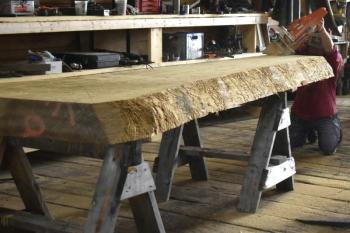 FRITZ FREUDENBERGER/Boothbay Register
FRITZ FREUDENBERGER/Boothbay Register
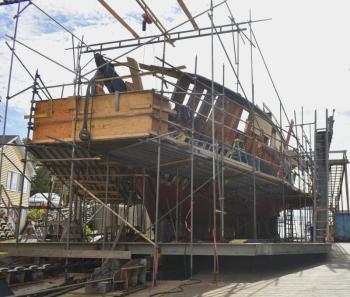 FRITZ FREUDENBERGER/Boothbay Register
FRITZ FREUDENBERGER/Boothbay Register
At 13, Greg Bailey started spending childhood summers alongside seasoned sailors wearing filthy Carhartts, draped in tattoos, earrings, and stories of globetrotting adventures. He volunteered on the U.S. Brig Niagara, the state ship of Pennsylvania, docked in his hometown of Eire. He was inspired by the ship, but more so by those around it.
“You look at these people and without saying a word, you knew that they were the best at what they were doing. Just the way that they would put the rigging together and sail the ship, and the way that things happened, they were just these people that a kid would look up to," he said. “(They) were all really good natural teachers because if you don't pass these skills and these traditions on, they're going to die because we're not hauling cargo with ships like this, we're not going to war on ships like this anymore.”
The lessons still stuck over three decades later. At 46, Bailey traveled to Maine this year on the Niagara as its newly appointed captain. The Niagara is now in Boothbay Harbor for an around $6 million restoration project with Bristol Marine at Sample's Shipyard. Over the course of the 12-month project, workers will replace the generators and twin engines, restore planking, refurbish its electrical systems, repair rigging, and return it to Coast Guard standards. The goal is to launch the boat May 1, 2026, to have it back at Erie Maritime Museum for July 4.
“It's a fantastic opportunity for cross-state partnerships ... We need the work done. There's only a certain amount of people that can do the work,” said Tyler Gum from the Pennsylvania Historical and Museum Commission, which owns and maintains the ship. “We know that the ship is taken care of the right way the first time on time, on target."
Built in 1988, the Niagara is a replica of Oliver Hazard Perry’s flagship during the Battle of Lake Erie in 1813. But it's also somewhat a proverbial Ship of Theseus, with non-structural parts from the original integrated into its hull. Dennis Gunderson, the shipyard’s general manager, said it’s one of the oldest remaining of its kind.
“We don't often get a chance to work on warships. We work on a lot of lumber schooners and old working schooners, but to work on a proper warship is unique. There aren't many left,” Gunderson said. “They present their own types of challenges as well as their own scale. These boats are built bigger, stronger, tougher to withstand the type of use that they were originally intended to do. And that's exciting.”
The magnitude of the Niagara presents its own challenges. The two-masted ship weighs around 350 tons, is over 110 feet long, and has an over 118-foot mast height. Project Manager and Shipwright Ross Branch said it’s the largest vessel he has worked on in the 10 years he has been at the shipyard. “The sheer size of the framing, the size of the night heads that I'm doing. Just the scale of the project. Everything is very, very big, which is good. I like it,” he said.
Bailey said the ship was designed specifically for the lake in the summer, when winds are low, which is why its rig is so large. He said rigging it is like tuning a violin. “Everything has to be right, and the body, if you tighten one string, then you run the risk of damaging the body if the other things aren't tight in the same way.”
But Bailey said that doesn't stop its performance and, despite the draft and the rigging size, it is responsive and versatile. Although only under engine power, its voyage to Maine took around 21 days with a 14-person crew. From Lake Erie, they went up the Welland Canal to Lake Ontario, down the Bay of Saint Lawrence, through the Northumberland Strait by Prince Edward Island, and then around Nova Scotia to Maine. “It was uneventful. Everything happened the way that it was supposed to. The weather cooperated in such a way that I'm nervous for the way back. Did I use up all my good luck finding a crew and getting good weather?”
At the shipyard, Branch also said there haven't been too many unfortunate surprises. Once the planks were peeled off, they discovered the frames were in good shape, and they expect the project to be completed on schedule. He added that teaching new hands the process will take time, but it will speed up as they improve.
“We're here to continue the traditions of traditional boat building, carry on the skills, continue to train and train shipwrights and be a place for them to show their skills and continue to hone (them),” Gunderson said.
Once back in Erie, the Niagara will provide more learning opportunities. It will return to being a historical education vessel. Not only is it used for historical reenactments, sailing trips, and as a dockside attraction, it’s a training vessel for new sailors.
That's what Bailey looks forward to the most, and it seems like his journey has come full circle.
“This whole life has given me adventure and love and heartbreak and fear,” he said. “Everything that you could get out of life is amplified through my experience with this ship and sailing ships in general, going to sea, where you're on your own. You're out there in the middle of nowhere, and what you have is what you have, and you have to make do.”
“I would like for some other 13-year-old kid to be sticking around and look at the crew that I hire in the same way as that crew that I encountered when I was a kid and be like, ‘Know what? Maybe I do want to do this for a living.’”

